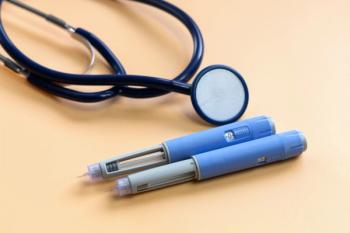
Menstrual Migraines: Overview, Treatment, and Prevention

Pharmacists play a key role in migraine management, therefore, awareness of menstrual migraine-specific prophylaxis is important.
Many patients frequently visit their local pharmacy for medical advice as a first line of contact. Therefore, it’s no surprise that 97% of community pharmacists are making at least 1 OTC recommendation per day for headaches and are often the first health care workers to address migraine treatment in patients.1
In addition, pharmacists have also been shown to increase the quality of life in migraine patients alongside an interprofessional team.1 With proven advantages of pharmacist involvement, it’s important to understand the demographics of this patient population and the subtypes of migraines that may require tailored treatment.
According to the American Migraine Prevalence and Prevention (AMPP) study, women report a much higher cumulative incidence of lifetime migraines in comparison to men.2 Of these women, menstrual migraines, a subtype of migraine, accounts for 60% of all migraines associated with women.3
Hormonal fluctuations that occur during menarche are thought to be a large factor in women being impacted with migraines.4 Currently, menstrual migraines are identified by the third edition of the International Classification of Headache Disorders (ICHD-3) as migraine attacks with or without aura, occurring 2 days before and up to 3 days after menstruation in at least 2 out of 3 menstrual cycles.5
Menstrual migraines are then divided into further categories between a pure menstrual migraine (PMM) in which the migraine exclusively occurs during menstruation and no other time of the cycle and a menstrually-related migraine (MRM), in which the migraine occurs not only during menstruation but at other times of the cycle.5 Although the ICHD-3 includes migraines with aura within this subtype, the majority of menstrual migraines do not have aura.3
Although menstrual migraines are associated as being comparable to non-menstrual migraines in types of symptoms, studies show that menstrual migraines are correlated with a more debilitating effect that includes longer attack durations, higher incidence of accompanying adverse effects (AEs), and more frequent therapy modifications.3 Therefore identifying, treating, and preventing this subtype of migraine can offer a targeted approach to migraine treatment in women.3
Pathophysiology
Currently, the cause of migraines itself is still theorized and so are menstrual migraines.4 However, with menstrual migraines, it is theorized that the premenstrual decrease in estrogen may trigger a menstrual migraine.4
It is also well known that studies have displayed a correlation of genetics with migraines and, therefore, hormonally-related genes such as estrogen and progesterone receptors are theorized to be related to menstrual migraines; however, further studies are needed to confirm the relation.6
Treatment
Currently, the American Headache Society (AHS) states that menstrual migraines can be treated similarly to non-menstrual migraines.7 These treatments include non-steroidal anti-inflammatory drugs (NSAIDs), triptans, ergots, and combination medications.8
However, although there is no FDA-approved treatment specific to menstrual migraines, they have been connected to increased disability compared to non-menstrual migraines.9 Therefore, identifying the diagnostic criteria for menstrual migraines can help prevention strategies if treatment fails.
Prevention
Prevention of menstrual migraines is tailored to the individual patient.7 There is short-term prevention, which is also known as “mini-prophylaxis,” and usually consists of triptans and/or NSAIDs, as well as use of estradiol gels.7 On the other hand, there is a more long-term prevention option that includes oral contraceptives.7
Triptans
Although there is a wide selection of triptans to use for migraine prophylaxis, studies show that specific triptans may be more effective in menstrual migraines in particular.7 Naratriptan and frovatriptan, both being long-acting, have shown good results in preventing menstrual migraines which often result in longer attacks.
Frovatriptan in particular has an advantage of being dosed up to 3 times daily as needed for pain rather than twice in comparison to other triptans.7 Another triptan, while being shorter in action, is zolmitriptan, which has also shown good efficacy.7 However, just like NSAIDs, triptans are known to cause withdrawal headaches; therefore, other methods of management may be recommended if this occurs.7
NSAIDs
NSAIDs, such as naproxen and mefenamic acid, have shown some moderate benefit when studied in prevention specifically for menstrual migraines at scheduled doses and can also be concomitantly used with triptans in cases that migraines persist despite the use of triptan prophylaxis.7 However, chronic use of NSAIDs are well known to cause irritation in the gastrointestinal tract and lead to gastric bleeding.10
As a result, using alternative medications may be preferable. NSAIDs and triptans are also tied to withdrawal headaches.7 Therefore, it is advisable to find alternative treatments for patients who are prone to those effects of mini-prophylaxis options.
Estradiol Gel
For postmenopausal women, estrogen replacement is a strategy used to prevent migraines due to the theory of estrogen withdrawal triggering migraines.10 One such strategy would be supplementation of estrogen through estradiol gel.7,10
However, despite being shown to be beneficial, it was also found to increase the incidence of migraines days after its use.10 Therefore, longer acting hormonal supplementation may be a more beneficial plan for patients willing to use them.10
Oral Contraception
The use of monophasic combined hormonal contraception has shown to reduce headache burden and therefore could be an option for patients willing to be on oral contraception.7 Although not formally studied in migraine prevention, combined hormonal contraceptives used in extended durations beyond the 28-day cycle may be considered beneficial to minimize the amount of times a patient goes through estrogen withdrawal.7
Another strategy would be to use combined hormonal contraceptives with estradiol gel used during the placebo week to mitigate estrogen withdrawal.7 However, it is important to note that oral contraceptives with estrogen are contraindicated in patients who have migraine with aura and, although rare in menstrual migraines, will need to be assessed.11
With patients who present with aura, have other contraindications, or cannot tolerate a combination option, progesterone-only contraceptives may be an alternative option that has some evidence showing that migraine frequency was reduced.10 However, it was only studied in desogestrel and is only available in the United States as a combination pill.10
Alternative Prevention Strategies
In the case that treatment or prevention of menstrual migraines has not given the patient relief, other options include beta-blockers, antidepressants, and antiepileptics that are commonly used in non-menstrual migraines.10 Other alternatives, although lacking in evidence, would be the use of gonadotropin releasing hormone (GnRH) agonists for severe cases of refractory menstrual migraines, magnesium, and phytoestrogen.9,10
Oral Non-Menstrual Migraine Prophylaxis8
- Beta-Blockers: propranolol, metoprolol, timolol, atenolol, nadolol
- Anti-epileptics: topiramate, divalproex, valproate
- Antidepressants: venlafaxine, amitriptyline
- Other: candesartan, lisinopril, memantine
GnRHAgonists
GnRHagonists were tested for menstrual migraines for their menstrual suppression.10 Despite looking into this treatment option, trials were done with very few participants and generated significant AEs.9 Treatments such as these involving menstrual suppression should only be reserved in select cases and other options with more evidence should be pursued.10
Other Options
There have been studies delving into minerals, such as magnesium, as well as phytoestrogen derived from soy.9 However, studies have been shown to be very limited and, therefore, the evidence for the use of these products is poor.9
Conclusion
Although treatment in menstrual migraines is similar to non-menstrual migraines, there are preferred agents for prevention. The selection of long-acting triptans, such as naratriptan and frovatriptan as well as zolmitriptan, have shown efficacy. These is also evidence indicating naproxen or mefenamic acid as potential options.
Hormonal replacement or contraception are also key prevention strategies to consider. Pharmacists are shown to play a key component in migraine management; therefore, awareness of menstrual migraine-specific prophylaxis is important.
About the Authors
Author: Meina Determan, PharmD candidate, Texas A&M University Irma Lerma Rangel School of Pharmacy, Classof 2025.
Preceptor: Ashley Sturm, PharmD, BCPS, Clinical Pharmacist, Mayo Clinic Medical Center-St. Mary’s Campus.
References
- Patel, N., Barnhart, R., Konkol, P. et al. Treatment of migraine: a review of disease burden and an update on the therapeutic landscape for pharmacists.Drugs Ther Perspect 37, 75–86 (2021). https://doi.org/10.1007/s40267-020-00801-2
- Allais G, Chiarle G, Sinigaglia S, Airola G, Schiapparelli P, Benedetto C. Gender-related differences in migraine. Neurol Sci. 2020;41(Suppl 2):429-436. doi:10.1007/s10072-020-04643-8
- Wang M, Zhu G, Song Z, Kong F. Clinical differences between menstrual migraine and nonmenstrual migraine: a systematic review and meta-analysis of observational studies. J Neurol. 2023;270(3):1249-1265. doi:10.1007/s00415-022-11477-1
- Chaudhary A. Migraine Associated with Menstruation An Overlooked Trigger. JNMA J Nepal Med Assoc. 2021;59(238):611-613. Published 2021 Jul 1. doi:10.31729/jnma.6332
- Headache Classification Committee of the International Headache Society (IHS) The International Classification of Headache Disorders, 3rd edition. Cephalalgia. 2018;38(1):1-211. doi:10.1177/0333102417738202
- Kalarani IB, Mohammed V, Veerabathiran R. Genetics of Menstrual Migraine and Their Association with Female Hormonal Factors. Ann Indian Acad Neurol. 2022;25(3):383-388. doi:10.4103/aian.aian_1116_21
- Burch R. Epidemiology and Treatment of Menstrual Migraine and Migraine During Pregnancy and Lactation: A Narrative Review. Headache. 2020;60(1):200-216. doi:10.1111/head.13665
- Ailani J, Burch RC, Robbins MS; Board of Directors of the American Headache Society.The American Headache Society Consensus Statement: Update on integrating new migraine treatments into clinical practice. Headache. 2021;61(7):1021-1039. doi:10.1111/head.14153
- Nierenburg Hdel C, Ailani J, Malloy M, Siavoshi S, Hu NN, Yusuf N. Systematic Review of Preventive and Acute Treatment of Menstrual Migraine. Headache. 2015;55(8):1052-1071. doi:10.1111/head.12640
- Allais G, Castagnoli Gabellari I, Mana O, Benedetto C. Treatment strategies for menstrually related migraine. Womens Health (Lond). 2012;8(5):529-541. doi:10.2217/whe.12.37
- Estrogen-Progestin Combinations. In: Lexi-Drugs. Lexi-Comp, Inc. Updated April 21, 2023. Accessed June 11, 2023. https://online-lexi-com.srv-proxy1.library.tamu.edu/lco/action/doc/retrieve/docid/essential_ashp/410421?cesid=4UTGrUZdVGM&searchUrl=%2Flco%2Faction%2Fsearch%3Fq%3Destrogen-progestin%2Bcombinations%26t%3Dname%26acs%3Dtrue%26acq%3Dcombinati#cauts-nested-0
Newsletter
Stay informed on drug updates, treatment guidelines, and pharmacy practice trends—subscribe to Pharmacy Times for weekly clinical insights.




















































































































































































































